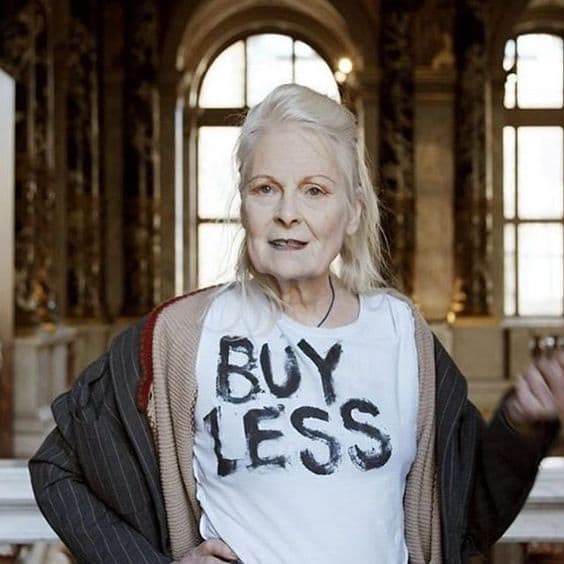The Big Question for Marketers in 2023 is a Stark One: How Do You Do More With Less?
By Mark Hooper
Takeaways
• Don’t let Short-Term Thinking Skew your Vision
• Think of your Marketing Strategy as your Most Valued Shop Assistant
• Go Organic
• Move from Influencers to Ambassadors

First, the bad news you all knew was coming: we can expect marketing spending to be squeezed in 2023, with the perfect storm of a global economic downturn and rising costs affecting not only brands but also the spending power of consumers.
The emphasis will be on being smarter with your marketing budget: adopting lower-cost / more cost-efficient strategies that offer more bang for your buck. CFOs will be challenging their departments to look at where they can make cuts – but it would be wrong to focus too much on boosting sales in the short term without considering the value of longer-term brand-building strategies.
At a time when customers are being more cautious with their money – the worst thing you can do is to try and push sales on them. If you think of your most valued shop assistant in a physical retail store, they’re not the employee who jumps on a customer as soon as they enter the shop and launch straight into their sales patter. Sure, they may score some short-term wins. But what experience has the customer had beyond a cold transactional interaction? If they are already worrying about the dollar in their pocket, such an approach might scare them off from engaging with your brand at all.
Now consider a ‘brand-building’ sales assistant. This employee takes time to get to know the customer and their needs. They make them feel relaxed and comfortable in what can often feel like an intimidating environment. Rather than focusing on an individual product, the assistant will introduce the customer to the brand’s philosophy and culture. They might even encourage the customer not to rush into a decision but to take their time. The way the assistant presents themself and interacts with the customer means they become the embodiment of the brand.

Who would you rather deal with? Whose store would you keep returning to?
Now think about the online sales experience. There is no shop assistant to guide you through the stock. When you come to the checkout, you are met with an impersonal, transactional process. The impersonal process is exactly the problem that photographer Nick Knight addressed when he spoke to us about why e-Commerce needs to be given an editorial makeover. As he demonstrated with his work for Maison Margiela, a more editorial approach can help make customers feel at home and less intimidated, otherwise they’re confronted with nothing but product and stale sales messages. This is what we mean when we say brand-building shouldn’t be neglected in a rush to boost sales.

In fact, it’s a false economy to look at brand building and sales as opposing aims. Loyal customers spend more money. And while we all need to look after the bottom line, we must also build for the future. While the latter might not see an immediate return, it plays a hugely important role in maintaining a profile among consumers – particularly when they are being more considered in their purchasing decisions.
So – show confidence in your marketing strategy, and the customer will be confident in returning to your store – be that a brick-and-mortar or digital space. Talking of which – there have been worrying signs that digital spending isn’t seeing the same reward over the past 12 months. Radical changes at Twitter and Instagram have seen many brands rethink their social media policies, worried that their reach isn’t being maximized as it once was. This, in turn, puts more pressure on the often influencer relationship. The often extortionate prices that influencers can command are being questioned: at a time when spending has to reign back, the obvious reaction is to focus more on organic marketing (because getting people to talk about you without having to pay them is always a cheaper route).
Another editorial maxim – ‘the why not the what’ helps shape the approach marketing should adopt toward social media. In short, an editorial approach helps explain the brand’s wider world, placing it in the right context with the right reference points (think about the sales assistant analogy again). This is the ‘why’ – it explains why a brand and its products should matter to the consumer. Brand positioning on Instagram, TikTok, etc., should focus on reputation building via storytelling (the why) rather than direct sales (the what). Content that moves beyond straightforward ad campaigns can encourage consumers to interact for longer on social media.


There is a strong sense that we are on the cusp of a new era of social trends. Predicting which platform will take over another is, of course, the million-dollar question. But we can at least get a hint of where things are going by following the consumer rather than presuming to know better than them.
The metaverse no doubt offers a whole new virtual world of opportunity in terms of marketing and content creation – while many brands are also exploring direct marketing, physical installations (from billboards to experiential events) backed up with a digital element to record data and build loyalty (‘phygital’) – as well as moving social media budgets to marketing within streaming platforms such as Netflix.


Using virtual avatar influencers in China is another interesting development – you can control them far better for a start, plus you don’t have to worry about reputation management if you are associated with a big name that becomes toxic. But it also offers the customer a more transparent and honest proposition. When the influencer is a character created by a brand, there is no grey area in terms of the relationship.




Similarly, expect to see more brands evolve their strategy from influencers to ambassadors: people who have a more direct correlation with the brand, offering a deeper, longer-term connection.



On top of all this, brands must address the first question that any project must answer: what is the measure of success? If the answer is shifting products as fast as possible, maybe the annoying shop assistant approach is right for you after all. But if you still want to be around in twelve months’ time, think about the shop assistant that people like to come back to and spend time with. That’s why marketing and sales are different departments.
